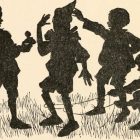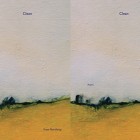Literary Boroughs #42: St. Louis, MO
The Literary Boroughs series will explore little-known and well-known literary communities across the country and world and show that while literary culture can exist online without regard to geographic location, it also continues to thrive locally. Posts are by no means exhaustive and we encourage our readers to contribute in the comment section. The series will run on our blog from May 2012 until AWP13 in Boston. Please enjoy the forty-second post on St. Louis, Missouri, by Aimee Levitt. -Andrea Martucci, Ploughshares Managing Editor
When people think of St. Louis, if they bother to think of St. Louis at all, they tend to confuse it with Milwaukee or Cleveland, one of those Rust Belt cities that was once important but has now sunk into irrelevance. St. Louis is neither Northern nor Southern, Eastern nor Western—though it does claim bragging rights as the Gateway to the West, thanks to Eero Saarinen’s magnificent Arch that rises above the Mississippi River. But if you ever bothered to come to St. Louis, you’d find a gracious, old-fashioned, and, above all, literary city—and, yes, that defensiveness and sense of under-appreciation is characteristically St. Louisan.
What the city is known for:
St. Louis is probably best known for beer and baseball. And also bricks. We have some solid housing stock here. And did you know we hosted the 1904 World’s Fair? Don’t worry, if you spend as long as a single day here, you’ll hear all about it. Although there’s plenty of talk about how St. Louis is moving forward and becoming, once again, a great American city, deep down, many of those doing the talking still fear that the Fair was probably St. Louis’s finest hour.
Resident writers:
Mark Twain grew up 80 miles north of St. Louis, in Hannibal, and spent some time in the city during his years as a riverboat pilot. Then he heard the siren call of the West and left. Kate Chopin grew up near what is now Busch Stadium, was a debutante and wrote some of her earliest (unpublished) stories here. Then she married a man from New Orleans and left. T.S. Eliot grew up in Midtown and in the Central West End. Then boarding school and life in England beckoned, and he left. Ditto Martha Gellhorn, Emily Hahn, Eugene Field, William S. Burroughs, Marianne Moore, Harold Brodkey, Dick Gregory, Ntozake Shange, Jane Smiley and Jonathan Franzen. Tennessee Williams came back, but only under great duress. (His brother forced him to go into drug and alcohol rehab at Barnes Hospital and then, knowing how much Williams detested St. Louis, spitefully buried him in Calvary Cemetery.)
Fortunately, Washington University has evened up the import/export rate a bit. (Wash. U., incidentally, was founded by Eliot’s grandfather.) Its creative writing program lured a stellar faculty to St. Louis, including Howard Nemerov, Stanley Elkin, Donald Finkel, Constance Urdang, Jarvis Thurston, Mona van Duyn, William Gass and, currently, Gerald Early, Carl Phillips, Mary Jo Bang, Kathryn Davis and Kathleen Finneran. One of the program’s graduates, Anton DiSclafani, now a writer in residence, recently received a reported $1 million advance for her first novel, The Yonahlossee Riding Camp for Girls, due out in 2013. This has made her the most envied writer in the city.
There are plenty of writers outside the rarified university gates, too: Laurell K. Hamilton, Heather Brewer, Ridley Pearson, Curtis Sittenfeld, Sharon Shinn, David Clewell, Scott Phillips, John Dalton, Qiu Xiaolong, Tony D’Souza and Joe Schuster. Not to mention a cluster of terrific graphic novelists: Matt Kindt, Dan Zettwoch and Kevin Huizenga.
Literary references:
Probably the best-known depiction of St. Louis in recent literature is in Jonathan Franzen’s The Corrections, where it’s thinly disguised as “St. Jude.” (Franzen also set his first novel, The Twenty-Seventh City, here.) But the best would have to be Glenn Savan’s White Palace. Originally published as a paperback original in 1987, transformed into a movie in 1990 and now, sadly, out of print, White Palace tells the story of the relationship between a yuppie from wealthy west county and a middle-aged fast-food worker from lower-class Dogtown. It contains plenty of sharp observations of class differences (which haven’t evaporated much in the past 20 years), the annoying passivity of St. Louis drivers, St. Louisans’ endless fascination with where people went to high school, and hundreds of other things that will stun you with their accuracy if you live here—and give you an idea of what this city is really like if you don’t. The book owes a lot of this immediacy to the fact that Savan, a graduate of the Iowa Writers Workshop, was actually living here and working as a waiter while he was writing it.
One of the most charming things ever written about St. Louis is Stanley Elkin’s 1983 essay “Why I Live Where I Live.” Elkin moved to St. Louis to teach at Wash. U. and, like many transplants, came to find the city’s enduring mediocrity endearing. He wrote:
And I live where I live because I am comfortable, because the climate is equable, because the movies come on time but the theater is road show, second company, because the teams are dull but we get all the channels, because there can’t be four restaurants in the city that require jackets and ties and there’s a $25,000 ceiling on what city employees may earn and I make more than the mayor, the head of the zoo. Because I feel no need to take the paper.
Where to learn:
Washington University is the big kahuna of MFA programs around here. It’s the oldest, the richest and has the best-known faculty members and most national recognition (it came in at number nine in Poets & Writers’ most recent rankings). But the University of Missouri-St. Louis (UMSL) has an up-and-coming program that has already produced some talented writers, and Lindenwood University and Webster University are also well-regarded locally. Outside the universities, the St. Louis Poetry Center offers monthly workshops during which distinguished local poets critique pre-submitted work. The St. Louis Writers Guild also sponsors workshops and offers writing coaching services.
Where to find reading material:
For a small city, St. Louis has a remarkable number of independent bookstores. Among the general interest stores, Left Bank Books, with its two locations and steady stream of visiting writers, is the biggest. (It also sells used books and has a generous buy-back program for those who have more books than cash.) Subterranean Books, stocked with volumes on art and design and philosophy and the Beat poets, is the coolest. And Pudd’nhead Books, which has an expansive children’s section and a resident dog named Henry, is the friendliest. (Ed note: Since this post was written, Pudd’nhead Books has sadly closed, breaking many hearts including that of the author of this post.) Tiny Big Sleep Books sells mysteries and mysteries only, Star Clipper has the city’s best collection of comics and graphic novels and Main Street Books in nearby St. Charles specializes in local history. And if you find a cavernous storefront and basement filled with endless rows of used books beautiful, Dunaway Books is the most gorgeous place in town.
St. Louis also has three—count ‘em, three—library systems: the St. Louis Public Library, the St. Louis County Library and the Municipal Library Consortium of St. Louis County. All three can be used interchangeably as long as you’re a resident of St. Louis City or County. Which means any book you could possibly want can be yours, at least temporarily.
Where to get published:
More than three decades old, River Styx is the grande dame of literary St. Louis, though the list of authors it’s published extends way beyond the Mississippi River to include just about every great modern poet you can think of. Boulevard, produced by Saint Louis University, is equally distinguished and regularly publishes work that ends up in the Best American anthologies. Not to be outdone, UMSL has its own literary journal, Natural Bridge. Meanwhile, on the book front, there’s the nonprofit PenUltimate Press, nonfiction-only Stonebrook Press and newly-established Walrus Publishing, which publishes work for St. Louisans, by St. Louisans, sold only to St. Louisans.
Where to write:
St. Louis writers remain on an eternal quest for the best café in which to write. The Mud House on Cherokee Street has the best coffee and food, free WiFi, a lovely back garden (where you can even plug in your laptop), and even provides a full array of free local journals—but alas, it closes at five, which makes it very inconvenient if you’re a writer with a day job. Meshuggah Café, in the Delmar Loop near Wash. U., has terrible coffee and slow service, but a pleasingly disreputable atmosphere, and it’s open late, though not all night. Hartford Coffee in Tower Grove South is also open late and even has good coffee, but it’s frequently plagued by small children (during daylight hours) and singer-songwriters (in the evenings)—though a newly-established quiet room in a former carriage house in the back garden might help alleviate both those problems. The Coffee Cartel in the Central West End remains, much to the sorrow of local night owls, the only all-night café within the city limits. It’s dim and dirty and a little scary at three a.m., but that could add an extra frisson to one’s writing.
One local short story writer has reported great success at the Kaldi’s Coffee inside the Schnuck’s supermarket in suburban Town & Country. The seats are comfortable, she claims, which is important since writing is about staying put.
The Royale remains the city’s most literary bar, and has even been known to host a reading or two, but very seldom—if ever—can you spot someone trying to get some writing done there.
St. Louis’s natural beauty is breathtaking, especially for those who expect it to be a sad, broken-down sort of place, and it has an extensive and well cared-for park system. Careful research has shown that Lafayette and Tower Grove Parks have the best trees to sit under, but neither is an especially good place to write, since one must always be on the alert for wayward dogs and kickball, softball, cricket and old-time baseball players.
Events/Festivals:
Left Bank Books hosts a steady stream of visiting writers with a reading almost every night. The St. Louis County Library is less frequent, but more selective: It specializes in the big guns, the award-winners, the writers drowning in buzz and its readings regularly draw crowds of several hundred spectators. The St. Louis Literary Award brings a Very Famous Writer to Saint Louis University every year for a book-signing, public interview, and a benefit dinner for the university library. (This year’s recipient was Tony Kushner; past winners have included Don DeLillo, Salman Rushdie and Joan Didion.) And every fall, the St. Louis Jewish Book Festival takes over the JCC in west St. Louis County and imports a broad swath of special guests — some of whom aren’t even Jewish! Or writers!
River Styx has run a monthly reading series since the magazine began publishing. In earlier years, the readings were rowdy affairs and sometimes ended with audiences drenched in beer, but as the crowd has grown older, the events have grown more sedate. Or, if you will, more focused on literature. In the summer months, the series morphs into Hungry Young Poets when bright young writers have a chance to show off their stuff. The St. Louis Poetry Center’s Observable Readings series also hosts bright young poets, but during the academic year.
If you like misery and darkness and, especially, crime, check out Subterranean Books’ semi-regular Noir at the Bar series, which has spawned two anthologies and a slew of imitators in other cities across this fair nation.
Aimee Levitt is a staff writer for the Riverfront Times, St. Louis’s alt-weekly paper, where she’s covered, among many other things, local bookstores, the city’s literary history and the rebuilding of the new Central Library, which is why she’s wearing a hard hat. Her work has been considered “notable” by Best American Essays and Best American Non-Required Reading. Follow her at @aimeelevitt.



